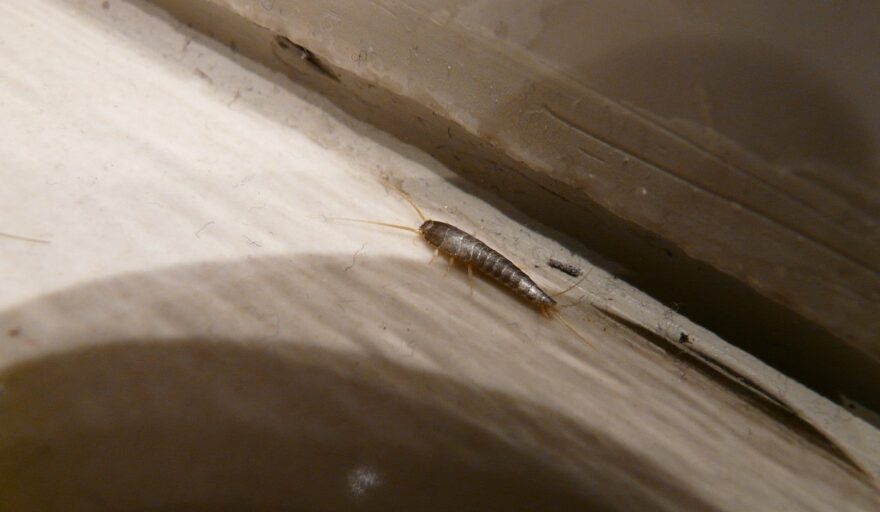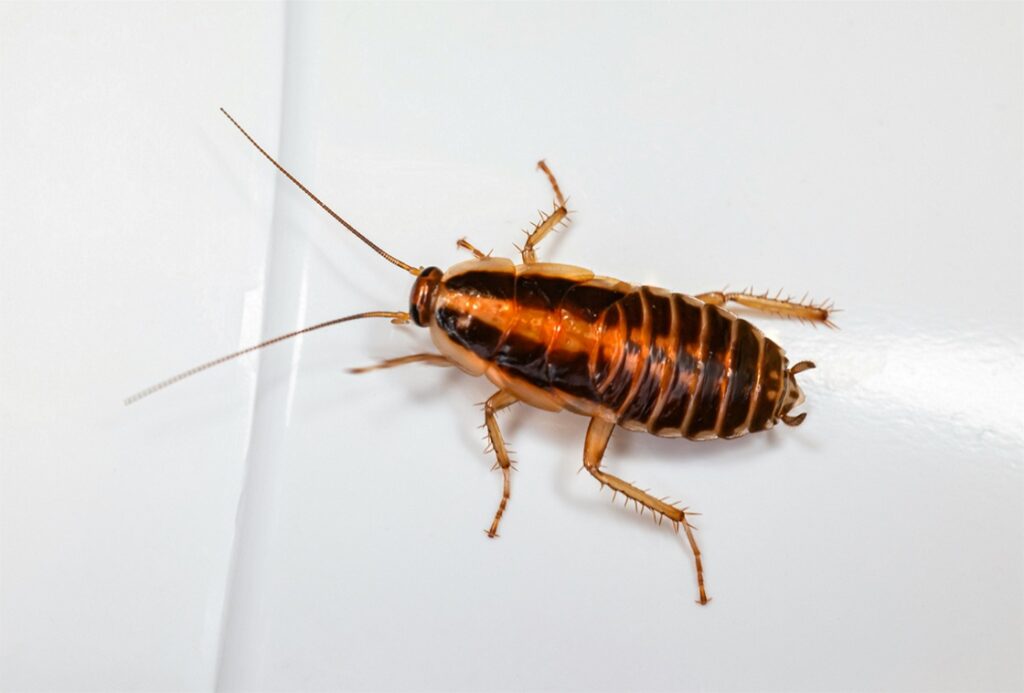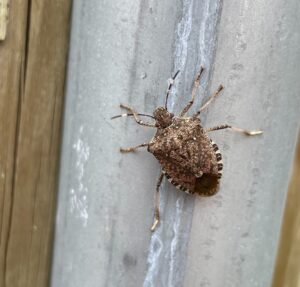
Winter Bugs and Other Pests: Where Do They Go and How Do They Survive?
November 21, 2023As we enter the winter months and anticipate the holiday season, there are many things to look forward to: cozy nights by the fire, holiday decorations, warm sweaters…but pests aren’t on the list. For residents of Lancaster and York counties, winter bugs like ground beetles, stink bugs, ladybugs, boxelder beetles, and grain beetles can become a major nuisance in the winter. Other common winter pests in Central PA include mice, centipedes, silverfish, cockroaches, and spiders.
But how do these bugs and other pests survive the cold — and where do they go? Let’s take a look at some of the most common winter pests in Central PA and how they manage to make it through the season.
Winter Bugs
Many bugs typically hibernate during the colder months and count on the warmth and shelter of homes to survive. Some of the most common winter invaders in the area include ground beetles, stink bugs, ladybugs, boxelder beetles, and grain beetles.
Ground Beetles
Ground beetles usually live under rocks or logs during the summer but can enter our homes in search of warmth and shelter once it gets colder.
They are a noticeable bunch due to their shiny black carapaces and well-developed mandibles. They often exhibit a striking metallic sheen that can range from blue to green. They vary in size, though most common varieties measure between 1/8 to 1/2 inch long. The beetles’ distinctive six-legged profile and prominent antennae make them easy to identify among other winter insects.
Although these bugs are not directly harmful to humans or pets, some species may release a foul-smelling odor if provoked or threatened.
Stink Bugs
Stink bugs hibernate in the winter but will often come indoors looking for a warm place to hide.
These bugs are easily identifiable with their mottled brown color, which helps them to blend into their natural surroundings. They are shield-shaped with long antennae and a broad body that tapers towards the rear. Stink bugs typically measure ½ to ¾ inches in length and possess a set of wings neatly folded atop their back.
While they are not dangerous, stink bugs emit a foul scent when threatened or crushed.
Additionally, they reproduce at a fast rate. A single female stink bug can lay hundreds of eggs in her lifetime, often depositing them on the undersides of leaves or in other sheltered areas. This makes managing stink bug populations a persistent challenge, particularly when they find their way into homes in the winter.
Ladybugs
Ladybugs, also known as lady beetles, also typically hibernate in the winter. They can often be found congregating on the sides of homes or inside attics.
These insects are characterized by their vibrant red or orange dome-shaped bodies, often dotted with black spots. They typically measure between 1/32 and 3/8 inches in length and have six legs, antennae, and a black head.
Although ladybugs are often perceived as harmless, they can become a nuisance when they invade homes in large numbers. Furthermore, some people might experience a mild allergic reaction to the yellowish secretion that these pests release when crushed. This secretion can stain walls, fabrics, and surfaces.
Boxelder Beetles
Boxelder beetles tend to gather around windows and doors seeking warmth in the winter.
These winter bugs feature dark brown to black elongated bodies adorned with red or orange markings, usually forming a characteristic ‘V’ shape. Measuring approximately ½ to ⅝ inches in length, boxelder beetles also have a set of red-edged wings that lie flat against their back when not in flight.
While they are not harmful to humans, these insects can be a considerable nuisance since they tend to invade homes in large numbers.
Grain Beetles
Grain beetles are another common type of winter beetle in the area. They are pantry pests that can survive the winter by finding shelter in homes and feeding on grains, cereals, and other stored food items.
Grain beetles are small, typically measuring between 1/10 to 1/8 inches long. They have segmented antennae and flat, elongated bodies exhibiting a shiny reddish-brown to nearly black color. When viewed from above, the heads of these insects appear to be concealed.
Despite their tiny size, grain beetles can cause significant damage to food areas during winter months.
Silverfish
Recognizable by their silvery-blue body and several pairs of legs, silverfish become particularly bothersome during the winter months. These small, wingless insects are attracted to damp, humid areas and can commonly be found in bathrooms, kitchens, laundry rooms, attics, and basements during colder seasons.
They are nocturnal pests and tend to shy away from light, making them hard to detect until an infestation has already set in.
The nuisance caused by silverfish extends beyond their unpleasant appearance. They pose a threat to various household items, as they feed on carbohydrates — particularly starches and sugars. They can also damage a wide range of items, from books and wallpapers to clothing.
Although silverfish are not known to spread disease, their constant gnawing and feeding can cause considerable damage around the home. Moreover, a silverfish infestation can be difficult to control: Females have a lifespan of two to eight years and can lay up to 20 eggs a day.
Cockroaches

If you’re wondering whether cockroaches die in the winter, the answer is not necessarily. Cockroaches are resilient creatures and it is said that they could even survive a nuclear war! In the winter, these bugs escape harsh conditions by seeking shelter and food inside buildings.
Roaches can find their way inside through cracks and crevices in walls, as well as through pipes and drains. Once inside, they tend to hide in dark, secluded areas such as behind the refrigerator, under the sink, and in cupboards. These pests are nocturnal, so they do their foraging at night — often going unnoticed until an infestation has taken root.
Cockroaches are a nuisance for numerous reasons: They not only contaminate food and surfaces with bacteria and parasites, but they can also cause food poisoning, dysentery, and other diseases through their droppings. In addition, they may cause allergic reactions or asthma attacks in some people.
Like many other winter pests, cockroaches reproduce rapidly and are difficult to exterminate without professional help.
Other Common Winter Pests
Aside from winter bugs, there are several common household pests that can pose a problem during the colder months.
Spiders
Spiders are resilient arachnids that can thrive even when the temperature drops. But where do they go and how do they survive in the winter?
These pests are frequently unwanted house guests, making their way through small cracks and open windows. They have also been known to hitch rides on items brought into the home. Once inside, they tend to hide in dark, secluded areas where they can spin their webs undisturbed – for example, in basements, attics, and closets.
While most spiders are harmless, species like the Brown Recluse and Black Widow pose a threat to humans. These varieties can deliver a venomous bite that causes symptoms ranging from mild discomfort to severe allergic reactions.
Mice
You might be asking yourself, “Do mice hibernate in the winter?” The common house mouse, like many other pests, seeks shelter indoors when the temperature drops. Mice can often be found inside walls or attics and are known to gnaw on wires, insulation, and even wooden structures – ultimately resulting in electrical faults, fire hazards, or structural damage.
Because these pests constantly scavenge for food, stored food items can become contaminated and unfit for consumption. Plus, mice can trigger allergic reactions and even spread pathogens like Hantavirus and Salmonella.
These winter pests typically reproduce quickly. A single female is capable of giving birth to up to ten litters per year, each containing five to six young. This rapid reproduction can quickly lead to a full-blown infestation if not controlled.
Centipedes
Centipedes are attracted to moisture and will come indoors in search of it. They can often be found in damp basements, bathrooms, or closets.
Despite their frightening appearance, centipedes are generally harmless to humans. However, certain species have a mild venom and can bite, causing minor discomfort or on rare occasion, an allergic reaction.
Centipedes also have the potential for rapid reproduction if a suitable environment is provided: A single female can lay between 35 and 50 eggs.
Since centipedes feed on other insects, their presence could be a sign of another underlying pest issue.
If you’re dealing with a persistent spider problem, call Dominion Pest Control to handle your infestation safely and effectively.
Winter Pest Control from the Experts
Dealing with pests during the winter can be a hassle, but it doesn’t have to be. At Dominion Pest Control, we understand the importance of keeping your home pest-free all year round. Our team of experienced technicians uses effective and eco-friendly methods to eliminate pests from your home and prevent them from returning.
Don’t let winter bugs and other common household pests ruin your holiday season. Call us today at (717) 393-7879 or contact us here for a free consultation and keep your Central PA home or business pest-free this winter.
Here’s to a peaceful and pest-free winter!

